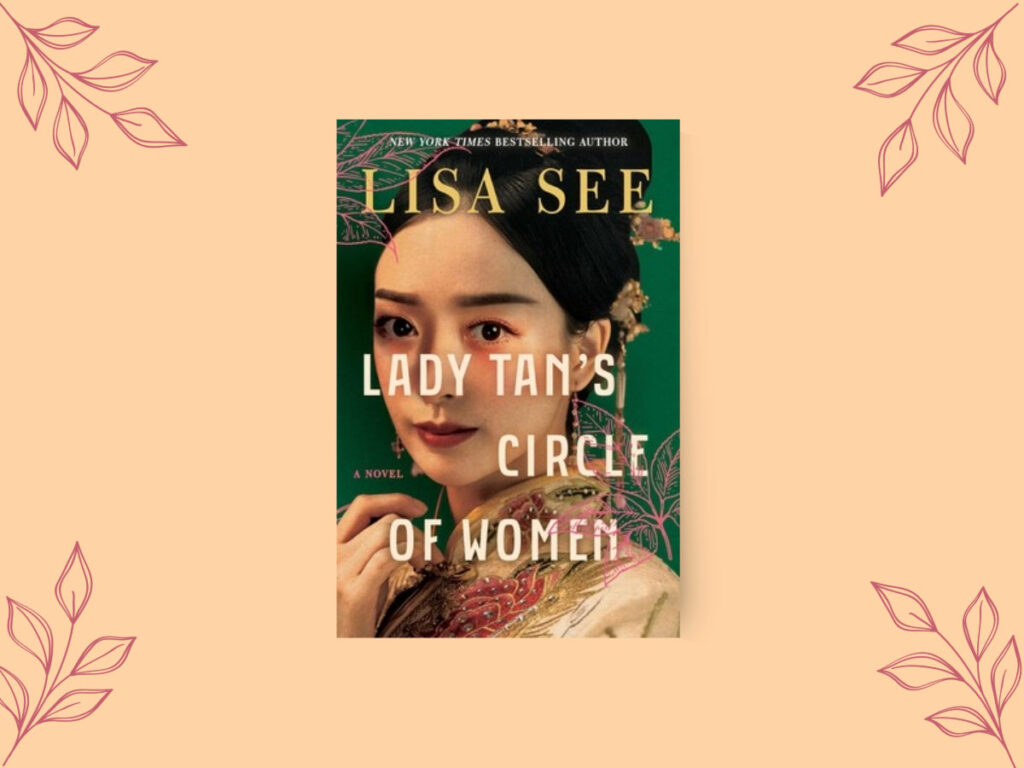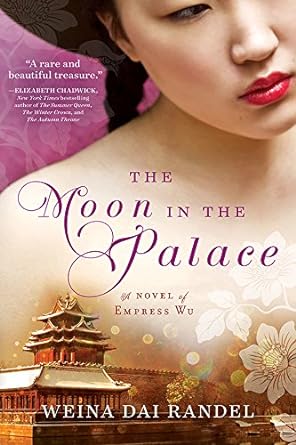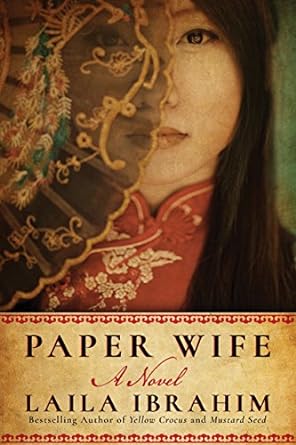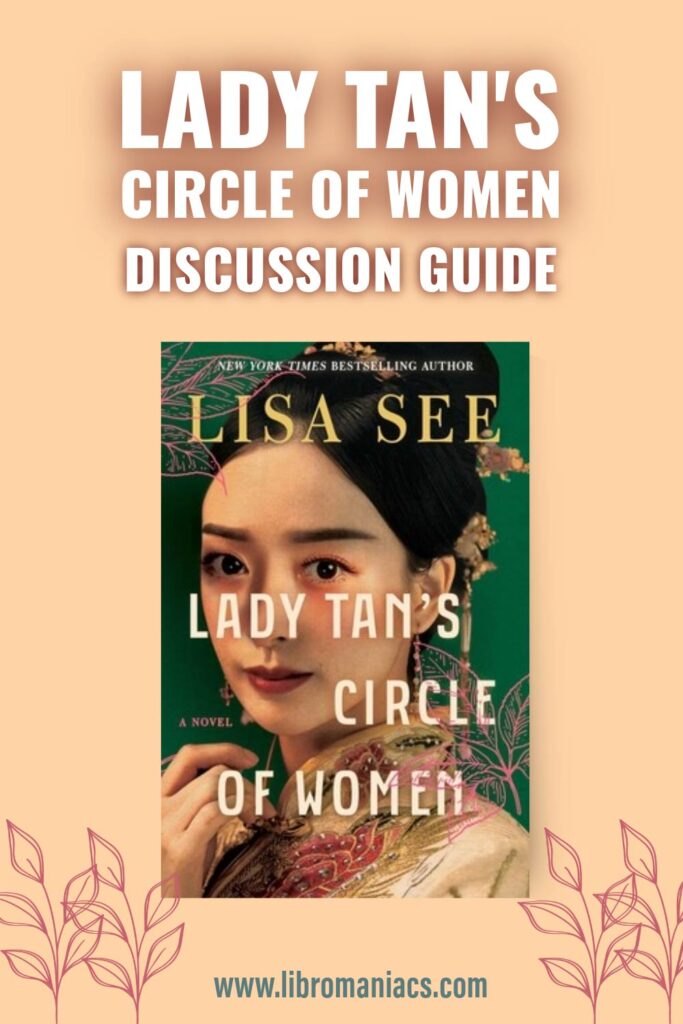Lady Tan’s Circle of Women is set in 15th-century China during the Ming Dynasty, which immerses you into this captivating historical fiction novel about female camaraderie when women were often marginalized and oppressed.
Lady Tan’s Circle of Women explores colorful themes of misogyny, social status, familial bonds, and friendships. Also, the vivid descriptions of Chinese history and culture are the making for an excellent book club selection for your group.
These ten book club questions for Lady Tan’s Circle of Women may also prompt discussions about the practice of medicine, tradition versus ambition, and the balance between yin and yang. In addition to the questions, this guide also features a book synopsis and some selected reviews to help assist your group’s conversation. At the very end of the guide, we also have included three similar reads for your next book club.

(This article contains affiliate links. This means that if you choose to purchase, I’ll make a small commission.)
Lady Tan’s Circle of Women Synopsis
(We always chose to provide the publisher synopsis because we feel that it’s worthwhile to discuss whether the official book description actually squared with your experience of the book.)
Lady Tan’s Circle of Women, Lisa See
According to Confucius, “an educated woman is a worthless woman,” but Tan Yunxian—born into an elite family, yet haunted by death, separations, and loneliness—is being raised by her grandparents to be of use. Her grandmother is one of only a handful of female doctors in China, and she teaches Yunxian the pillars of Chinese medicine, the Four Examinations—looking, listening, touching, and asking—something a man can never do with a female patient.
From a young age, Yunxian learns about women’s illnesses, many of which relate to childbearing, alongside a young midwife-in-training, Meiling. The two girls find fast friendship and a mutual purpose—despite the prohibition that a doctor should never touch blood while a midwife comes in frequent contact with it—and they vow to be forever friends, sharing in each other’s joys and struggles. No mud, no lotus, they tell themselves: from adversity beauty can bloom.
But when Yunxian is sent into an arranged marriage, her mother-in-law forbids her from seeing Meiling and from helping the women and girls in the household. Yunxian is to act like a proper wife—embroider bound-foot slippers, recite poetry, give birth to sons, and stay forever within the walls of the family compound, the Garden of Fragrant Delights.
How might a woman like Yunxian break free of these traditions and lead a life of such importance that many of her remedies are still used five centuries later? How might the power of friendship support or complicate these efforts? A captivating story of women helping each other, Lady Tan’s Circle of Women is a triumphant reimagining of the life of one person who was remarkable in the Ming dynasty and would be considered remarkable today.
Lady Tan’s Circle of Women Book Club Questions
These questions have been tailored to this book’s specific reading experience, but if you want more ideas, we also have an article with 101 generic book club questions.
- Consider the cultural traditions that define the role of women in the novel. In what ways do the female characters adopt and conform to cultural expectations? How do they defy them?
- Female bonds are an important theme throughout the novel. How are they depicted, in both terms of friendship and rivalry? What do these bonds reveal about the ideas of femininity and women’s roles within the text?
- “No mud, no lotus. It means that goodness can grow from difficulties. Adversity can sprout into triumph.” A catchphrase used between Yunian and Meiling throughout their friendship, highlighting the importance of female alliances in a man’s world. How does the “circle of good” around Yunxian help her be strong when faced with social challenges?
- A thought-provoking issue in Lady Tan’s Circle of Women is the conflict between respect for tradition and pursuing individual growth. How does each of the characters, especially Yunxian, navigating this delicate balance of yin and yang?
- Throughout the book, friendship has been portrayed as a sustainable and powerful relationship, especially between Yunxian and Meiling, who come from two different social classes. How does their friendship shape their individual paths in life?
- “The memories of the agony you felt during your footbinding will never leave completely. There will be days from now until you die when the aguish will visit.”
Footbinding becomes a metaphor for the suffering of being a woman. Considering the one in ten survival rate, what do you think the characters felt about this custom, knowing it could kill them?
- Examining the theme of tradition versus ambition, can you share instances in the story where Yunxian was caught in a dilemma between the two? How did she handle it?
- Yunxian pursues having a medical practice despite the many obstacles in her way. How does her relationship with her practice and commitment to her work change throughout the story? How does it shape her characterization and character arc more broadly?
- In the novel, bound feet were considered a symbol of status, separating elite women from working women. In today’s society, what are some of the symbols that distinguish different socioeconomic statues? How do these symbols affect women’s choices and lifestyles?
- “In life and medicine, we always return to harmony and disharmony […] Yin and yang are always in movement—buoying and changing each other.”
Talk about how Yunxian understood harmony and balance in the treatment of illness. What effect does this have on the inner conflicts of her character?
Selected Reviews of Lady Tan’s Circle of Women
(Use these selected Goodreads reviews to compare with your own experience of the book. Do you agree or disagree with the reviews?)
“Once again, Lisa See has created a family saga filled with compelling and complex characters. I was completely immersed in Lady Tan’s relationships and intrigued by her pursuit of medicine. The female relationships were paramount, and the desires, fears, and secret hopes of everyone in her household from the aging spinster aunts to the powerless lady’s maid, were brilliantly executed. Highly recommend.”
“This book was profoundly disappointing. I went into it expecting a story about feminism and women pushing back against the boundaries of a patriarchal society and challenging a woman’s place in society. Mostly because that was how it was marketed. Instead, this book just felt like a brief description of what life was like for women at this point in time, without the slightest bit of a critical eye.”
“4.5 stars When I’m in the mood for a refresh on what I know about ancient Chinese culture, women, and foot binding, I turn to Lisa See who has taught me everything I know about those things. She’s the master, in my humble opinion, and can always be counted on to deliver a fascinating account of her newly created, thoroughly original characters. I learned some things I didn’t know before, which is always good!”
“I thoroughly enjoyed Lisa See’s Snow Flower and the Secret Fan, but this one was just disappointing for me. For a “novel”; this had too many details on medicine (mostly traditional), myths, Chi and yin and yang for me to care for. This book also had too many characters without them adding much context or depth to the story.”
Similar Books to Lady Tan’s Circle of Women
If you’re keen on more female-centric stories with Asian settings, check out our discussion guides for Pachinko, The Women, The Many Daughters of Afong Moy, and The Covenant of Water. Each guide has a synopsis on the top of the page.

The Bonesetter’s Daughter, Amy Tan
The novel spans from early 20th century China to contemporary San Francisco.This story centers around the relationship between a Chinese immigrant and her American-born daughter who grapples with her mother’s deteriorating mental health. The major themes throughout the novel are familial ties and secrets, communication, and saving memories and culture of the past.

The Moon in the Palace, Weina Dai Randel
A novel set during the Tang Dynasty, and centered around Mei, a girl who is prophesied to rule over a kingdom. In her early womanhood, she becomes a concubine of Emperor Taizong, and from there, eventually becomes an Empress. The main themes in the novel are ambition, love, and loyalty.

Paper Wife: A Novel, Laila Ibrahim
A novel set in the 1920s, Mei Ling is married off by her parents to an American, and travels from China to America. A heart-wrenching story about finding strength in the new world. This story centers around immigration, arranged marriages, isolation, courage, love, and new beginnings.
Share these Lady Tan’s Circle of Women book club questions with your friends:

